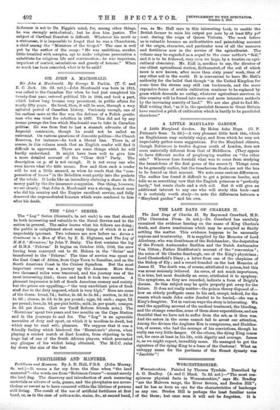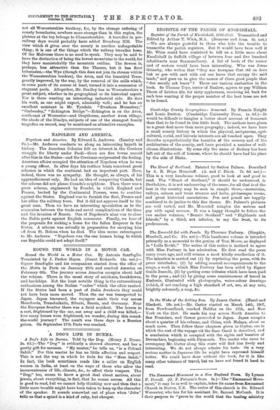WORCES'faiRSHIRE.
Worcestershire. Painted by Thomas Tyndale. Described by A. G. Bradley. (A. and C. Black. 7s. 6d. net.)—" The most con- spicuous physical facts in Worcestershire," says Dir. Bradley "are the Malvern range, the River Severn, and Bredon Hill"; and he has as keen an eye for the characteristics of landscape as any one. Bredon Hill is perhaps the least familiar name of the three; but once seen it will not be forgotten. It is
not all Worcestershire territory, for, by the strange ordering of county boundaries, nowhere more strange than in this region, the plateau at the top belongs to Gloucestershire. A traveller in pre- railway days would probably have added Broadway HilL The view which it gives over the. county is another unforgettable thing; it is one of the things which the railway traveller loses. Of the Malverns there is no need to speak. They may be said to have the distinction of being the lowest mountains in the world, for they have unmistakably the mountain outline. The Severn is, perhaps, less attractive than the Thames, but it has finer tributaries,—the Wye (though this does not join its stream within the Worcestershire borders), the Avon, and the beautiful Teme, greatly improved, by the way, by the removal of the mills which, in some parts of its course at least, turned it into a succession of stagnant pools. Altogether, Mr. Bradley has in Worcestershire a great subject, whether in its geographical or its historical aspect. Nor is there wanting an interesting industrial side. He does his work, as,one might expect, admirably well; and he has an excellent assistant in Mr. Tyndale. "Evesham Monastery," " Ombersley," " Eckington Bridge "—Eckington is on the Avon, south-east of Worcester—and Cropthorne, another Avon village, the abode of the Dinelys, subjects of one of the strangest family tragedies on record, may be mentioned as attractive examples.



























































 Previous page
Previous page